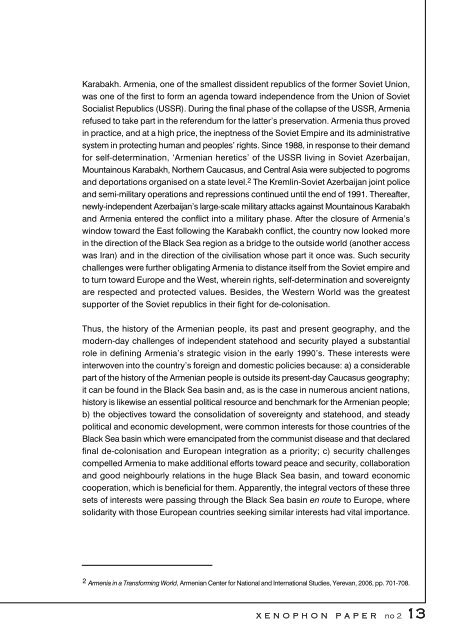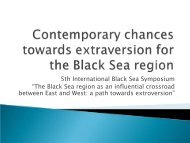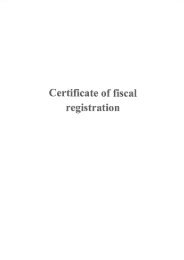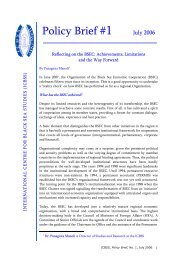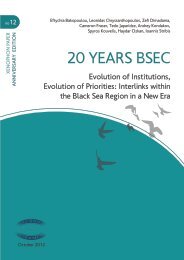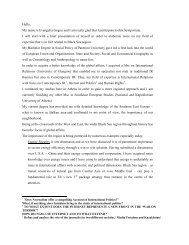Xenophon Paper 2 pdf - ICBSS
Xenophon Paper 2 pdf - ICBSS
Xenophon Paper 2 pdf - ICBSS
You also want an ePaper? Increase the reach of your titles
YUMPU automatically turns print PDFs into web optimized ePapers that Google loves.
Karabakh. Armenia, one of the smallest dissident republics of the former Soviet Union,<br />
was one of the first to form an agenda toward independence from the Union of Soviet<br />
Socialist Republics (USSR). During the final phase of the collapse of the USSR, Armenia<br />
refused to take part in the referendum for the latter’s preservation. Armenia thus proved<br />
in practice, and at a high price, the ineptness of the Soviet Empire and its administrative<br />
system in protecting human and peoples’ rights. Since 1988, in response to their demand<br />
for self-determination, ‘Armenian heretics’ of the USSR living in Soviet Azerbaijan,<br />
Mountainous Karabakh, Northern Caucasus, and Central Asia were subjected to pogroms<br />
and deportations organised on a state level. 2 The Kremlin-Soviet Azerbaijan joint police<br />
and semi-military operations and repressions continued until the end of 1991. Thereafter,<br />
newly-independent Azerbaijan’s large-scale military attacks against Mountainous Karabakh<br />
and Armenia entered the conflict into a military phase. After the closure of Armenia’s<br />
window toward the East following the Karabakh conflict, the country now looked more<br />
in the direction of the Black Sea region as a bridge to the outside world (another access<br />
was Iran) and in the direction of the civilisation whose part it once was. Such security<br />
challenges were further obligating Armenia to distance itself from the Soviet empire and<br />
to turn toward Europe and the West, wherein rights, self-determination and sovereignty<br />
are respected and protected values. Besides, the Western World was the greatest<br />
supporter of the Soviet republics in their fight for de-colonisation.<br />
Thus, the history of the Armenian people, its past and present geography, and the<br />
modern-day challenges of independent statehood and security played a substantial<br />
role in defining Armenia’s strategic vision in the early 1990’s. These interests were<br />
interwoven into the country’s foreign and domestic policies because: a) a considerable<br />
part of the history of the Armenian people is outside its present-day Caucasus geography;<br />
it can be found in the Black Sea basin and, as is the case in numerous ancient nations,<br />
history is likewise an essential political resource and benchmark for the Armenian people;<br />
b) the objectives toward the consolidation of sovereignty and statehood, and steady<br />
political and economic development, were common interests for those countries of the<br />
Black Sea basin which were emancipated from the communist disease and that declared<br />
final de-colonisation and European integration as a priority; c) security challenges<br />
compelled Armenia to make additional efforts toward peace and security, collaboration<br />
and good neighbourly relations in the huge Black Sea basin, and toward economic<br />
cooperation, which is beneficial for them. Apparently, the integral vectors of these three<br />
sets of interests were passing through the Black Sea basin en route to Europe, where<br />
solidarity with those European countries seeking similar interests had vital importance.<br />
2 Armenia in a Transforming World, Armenian Center for National and International Studies, Yerevan, 2006, pp. 701-708.<br />
X E N O P H O N P A P E R no 2 13


